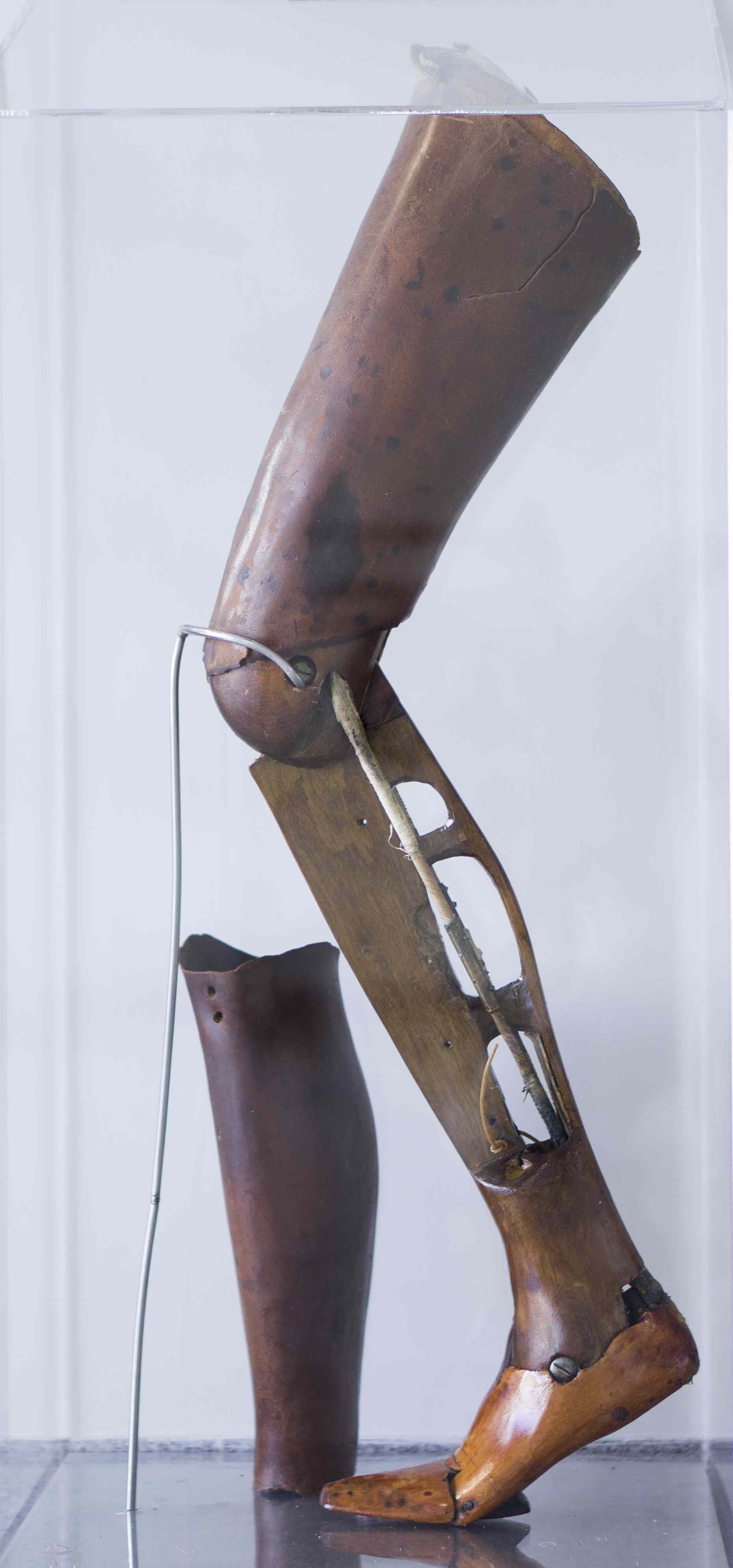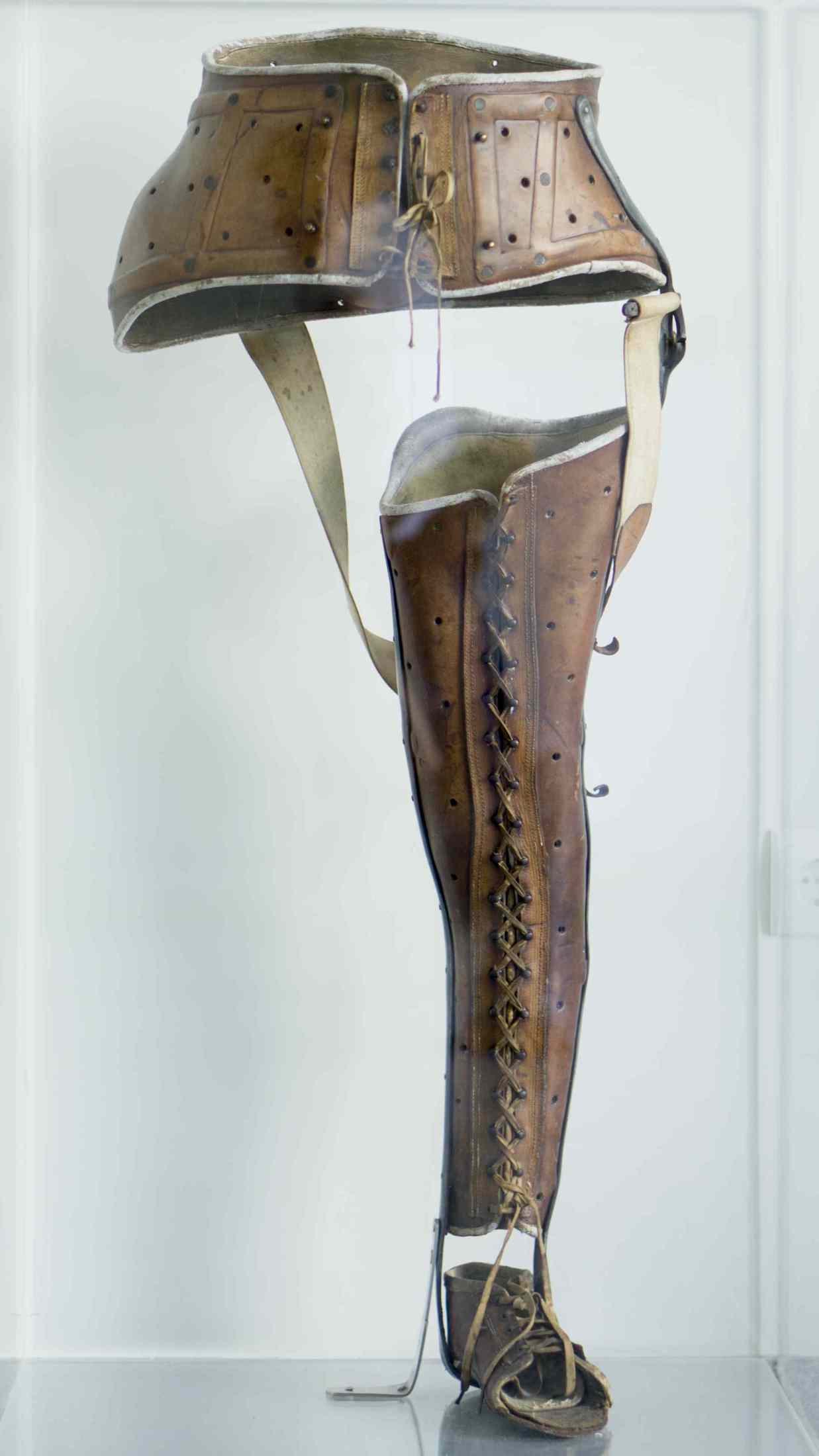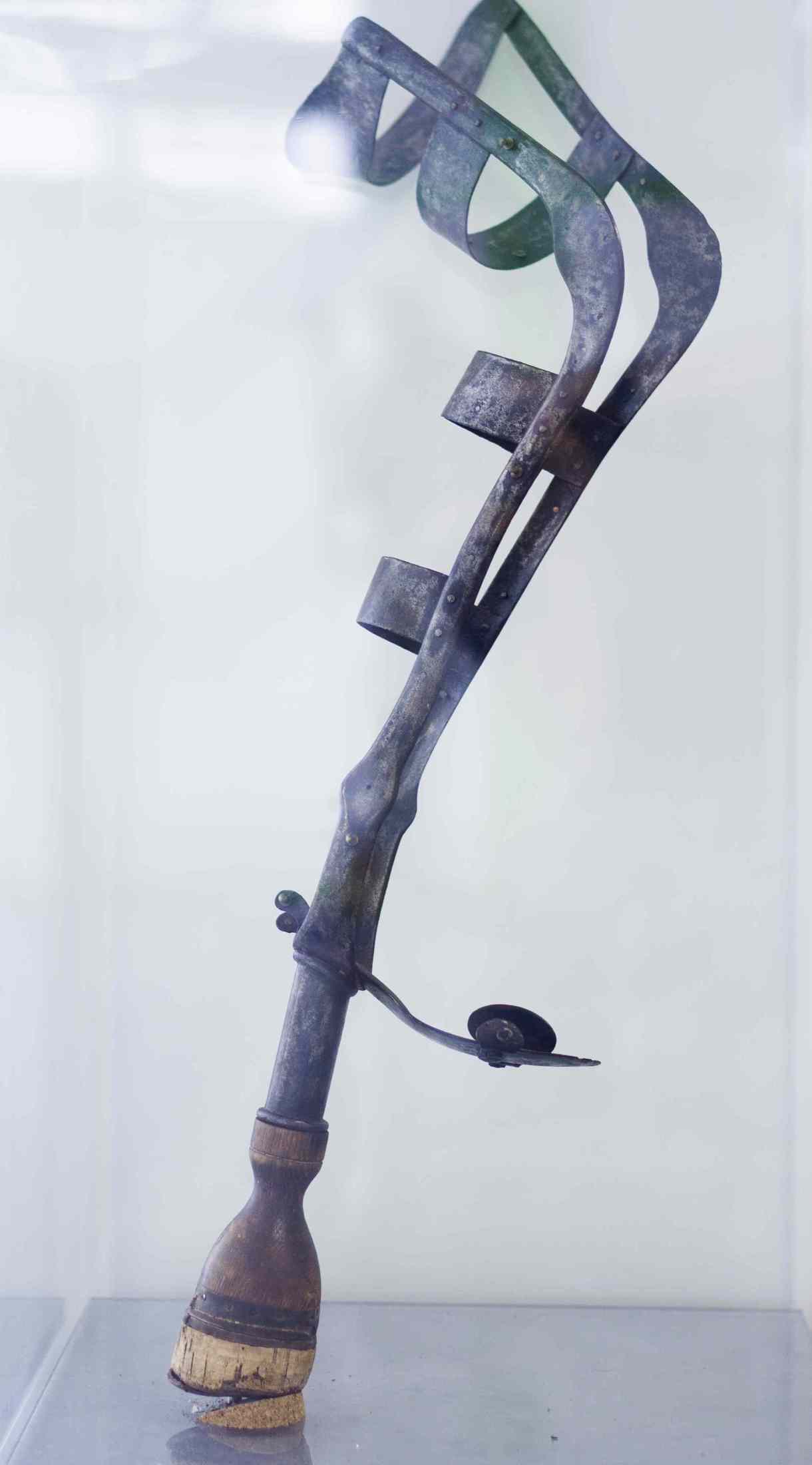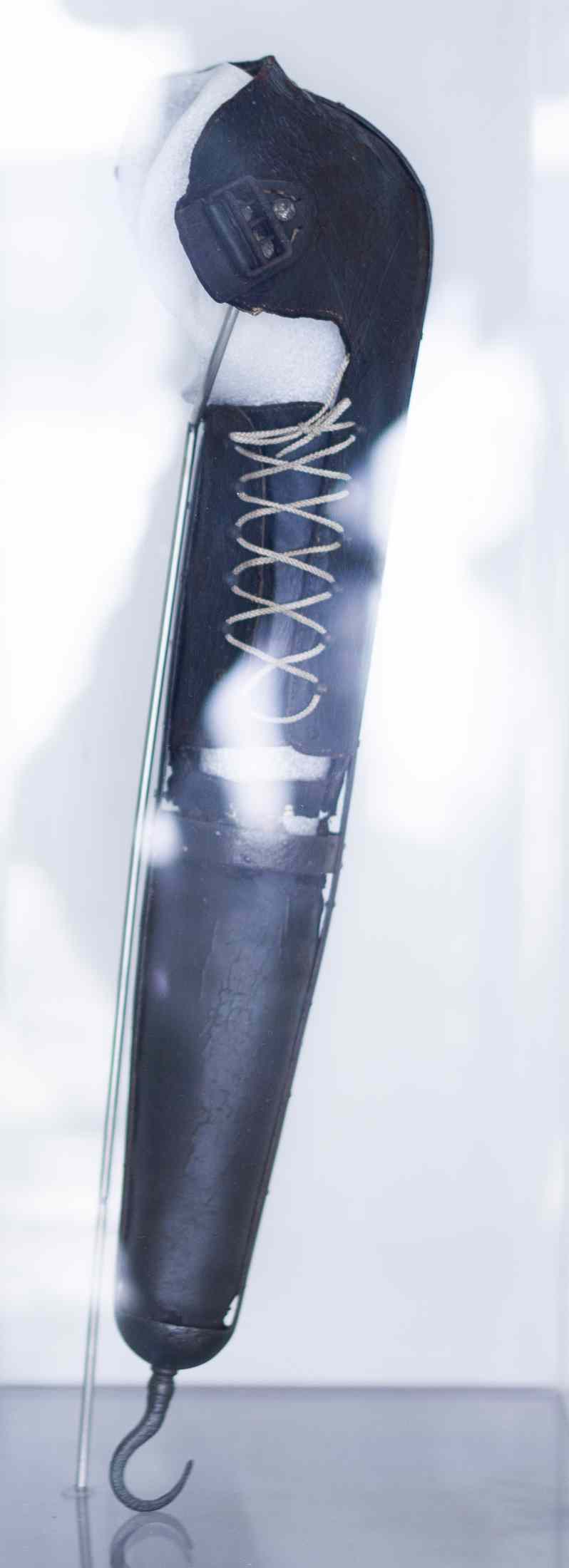Palmer's Prosthesis - Benjamin Franklin Palmer, 1846
This prosthesis introduced a new concept: it gave coordinated movement at the knee, tibio tarsal and metatarsal joints, in order to make a more natural gait. Palmer also intended to hide the spaces between the various components and to place springs and movement stops in the joints to give them a more natural looking gait. This prosthesis received a prize in the first show held at the Crystal Palace in London in 1851. Construction: Interior skeleton in wood, leather coating, controlled movement with pig bladder straps.
Construction: Interior skeleton in wood, leather coating, controlled movement with pig bladder straps.
Origin: United States of America
Manufactured date: 1840-1863




